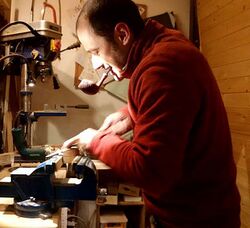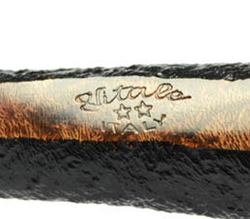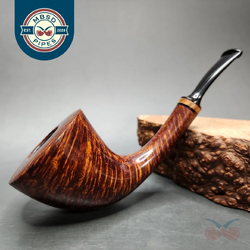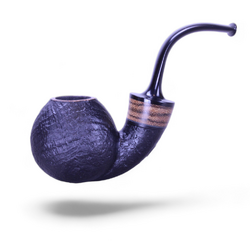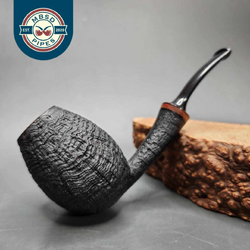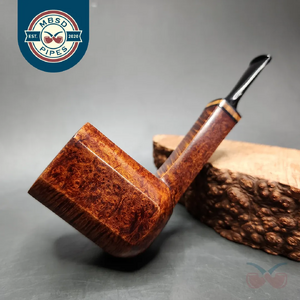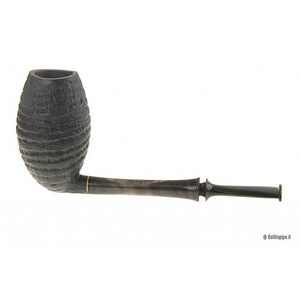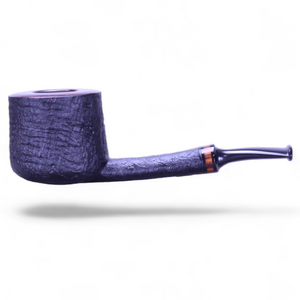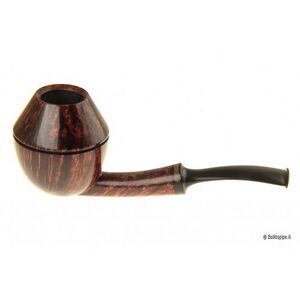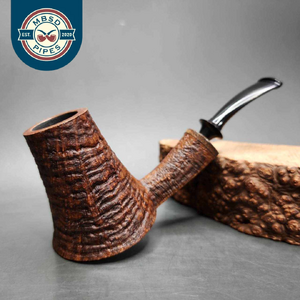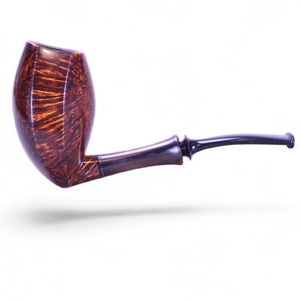Vitale Piero
The grandson of a carpenter and luthier, Piero Vitale's passion for woodworking started during his childhood. Spending time with his grandfather in his workshop, Vitale would try to make things out of pieces of wood that his grandfather cut for him.
As he grew older, Piero developed a fondness for working with his hands and exploring various different art forms, such as painting, music, and wood carving.
In 2014, Piero was introduced to the world of handmade pipes by a friend. Within just a few months, he started creating his first pipes and soon fell in love with the craft. These pipes would bear the name "Vitale."
Piero's pipe making inspirations include the work of Victor Yashtylov, Kent Rasmussen, Tom Eltang, Eder Mathias, and Gian Maria Gamboni. Through such artisans, that he discovered that pipe making can itself be a form of art. Designing and carving harmonious shapes that highlight the natural beauty of briar could, he found, produce something that was both a practical object and a work of art. It is this dual property of the pipe that has kept Piero captivated over his many years as a pipe maker.
Piero's current production is about 200 pipes per year. All of his pipes are completely handmade with rasps, files, sandpaper, Dremel tools, and a small lathe that he uses for cutting stems. He exclusively uses plateaux and ebauchon briar blocks sourced from Italian briar cutters Manno and Mimmo Romeo, which are seasoned for a minimum of two years before Piero turns them. For his stems, he favors German ebonite. Piero also uses a variety of ornamental materials for his pipes, such as boxwood, cocobolo, horn, and bamboo.
While each Vitale pipe is unique, observers will note a distinct and dependable aesthetic to Piero's output. Vitale pipes display a preference for large bowls—whether in width, height, or both—and comparatively shorter, thinner shanks. This simultaneous movement of expansion and contraction is found across the Vitale portfolio, from artisan staples such as the horn, the egg, and the elephant's foot, to traditional shapes, such as the panel billiard, the Rhodesian, and the Oom Paul.
Alongside his handmade pipes, Piero has previously worked with Italian pipe companies to design his own lines of factory-made pipes. These pipes have been sold under the Bluebird and Proxima names, with each featuring designs in Piero's inimitable style.
Grading
Vitale pipes are graded using a system based both on their grain quality and on the complexity of their designs. This means that a sandblasted pipe can be the same grade as a smooth pipe if its design is more complex and its grain patterns are particularly excellent. There are presently five possible grades, which are as follows (ascending):
- One Star
- Two Stars
- Three Stars/Moon (equivalent)
- Sun (rare).
Gallery
Contact Information
Website https://www.vitalepipes.com/ Email: vitalepipe@yahoo.com Instagram: https://www.instagram.com/vitale_pipes/ Facebook: https://www.facebook.com/profile.php?id=100011411334726
